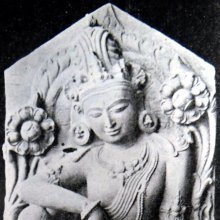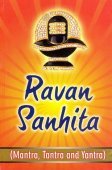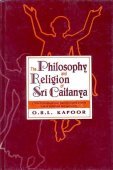Sadhana, Sādhanā, Sādhana, Sadhāna: 46 definitions
Introduction:
Sadhana means something in Buddhism, Pali, Hinduism, Sanskrit, Jainism, Prakrit, the history of ancient India, Marathi, Hindi. If you want to know the exact meaning, history, etymology or English translation of this term then check out the descriptions on this page. Add your comment or reference to a book if you want to contribute to this summary article.
Alternative spellings of this word include Sadhna.
Images (photo gallery)
(+120 more images available)
In Hinduism
Vaishnavism (Vaishava dharma)
Source: ISKCON Press: GlossarySādhana (साधन).—The beginning phase of devotional service, consisting of regulated practice.
Source: Pure Bhakti: Bhagavad-gita (4th edition)Sādhana (साधन) refers to “method, or practice adopted to accomplish a specific goal. Without sādhana one cannot obtain the goal. Sādhana corresponds to various goals: those who desire material enjoyment adopt the path of karma as their sādhana, those who desire liberation adopt the path of jñāna, and those who aspire for the eternal loving service of Śrī Kṛṣṇa adopt the path of bhakti, which involves the spiritual practices of hearing, chanting and so on”. (cf. Glossary page from Śrīmad-Bhagavad-Gītā).
Source: Pure Bhakti: Bhajana-rahasya - 2nd EditionSādhana (साधन) refers to:—The method one adopts in order to obtain one’s specific goal (sādhya). (cf. Glossary page from Bhajana-Rahasya).
Source: Pure Bhakti: Arcana-dipika - 3rd EditionSādhana (साधन) refers to:—The method one adopts in order to obtain one’s specific goal, or sādhya. (cf. Glossary page from Arcana-dīpikā).
Source: Pure Bhakti: Brhad BhagavatamrtamSādhana (साधन) refers to:—Practice or discipline; the method one adopts in order to obtain a specific goal, or sādhya. (cf. Glossary page from Śrī Bṛhad-bhāgavatāmṛta).

Vaishnava (वैष्णव, vaiṣṇava) or vaishnavism (vaiṣṇavism) represents a tradition of Hinduism worshipping Vishnu as the supreme Lord. Similar to the Shaktism and Shaivism traditions, Vaishnavism also developed as an individual movement, famous for its exposition of the dashavatara (‘ten avatars of Vishnu’).
Vyakarana (Sanskrit grammar)
Source: Wikisource: A dictionary of Sanskrit grammarSādhana (साधन).—The same as साधक (sādhaka) or कारक (kāraka) which see above; cf. साधनं च क्रियायाः। क्रियाभावात्साधनाभावः (sādhanaṃ ca kriyāyāḥ| kriyābhāvātsādhanābhāvaḥ) M. Bh. on P. I. 3. I. Vart. 1; cf also पूर्वं धातुः साधनेन युज्यते पश्चादुपसर्गेण (pūrvaṃ dhātuḥ sādhanena yujyate paścādupasargeṇa) and its opposite maxim also, पूर्वं धातुरुपसर्गेण युज्यते पश्चात्साधनेन (pūrvaṃ dhāturupasargeṇa yujyate paścātsādhanena) M. Bh. on P VI. 1.135. Vart. 9. cf. also Siradeva pari. 128, 129.

Vyakarana (व्याकरण, vyākaraṇa) refers to Sanskrit grammar and represents one of the six additional sciences (vedanga) to be studied along with the Vedas. Vyakarana concerns itself with the rules of Sanskrit grammar and linguistic analysis in order to establish the correct context of words and sentences.
Shaivism (Shaiva philosophy)
Source: academia.edu: Yakṣiṇī-sādhana in the Kakṣapuṭa tantraSādhana (साधन, “magical procedure”).—The Kakṣapuṭa-tantra is exclusively dedicated to sādhanas or magical procedures which are intended to generate worldly benefits. These types of magical procedures are sometimes formulated as the so-called ṣaṭkarman in the Buddhist, Hindu, and Jain traditions. The Kakṣapuṭa-tantra covers a variety of sādhanas.
The tantra lists the following divisions:
- Vaśya (controlling others);
- Ākarṣaṇa (attracting others);
- Stambha (immobilizing others);
- Moha (bewildering enemies);
- Uccāṭa (extirpating enemies);
- Māraṇa (killing others);
- Vidveṣa (provoking enmity);
- Vyādhikaraṇa (causing illness);
- Paśuśasyārthanāśana (causing loss of cattle, grain, and other properties);
- Kautuka (conjuring tricks);
- Indrajāla (creating illusions);
- Yakṣiṇīmantra-sādhana (invoking yakṣiṇī);
- Ceṭaka (using as a slave);
- Añjana (eye ointment);
- Adṛśya (becoming invisible);
- Pādukāgati (magic shoes);
- Guṭikā (magic pill);
- Khecaratva (going to the sky);
- Mṛtasaṃjīvana (raising the dead).
Sādhana (साधन) refers to the “means of realizing (unsurpassed pleasure)” [?], according to the Īśvarapratyabhijñāvivṛtivimarśinī 2.132.—Accordingly, “[The passage] ‘inasmuch as they are [somehow] manifest in the concept [representing them’ means the following]. [...] [As well as] ‘heaven,’ [apprehended] as the object of unsurpassed pleasure and as [the means of] realizing it (sādhana—...sādhanaviṣayatayā) [...]—[all these] must belong to the realm of phenomena; otherwise such [things] as the fact that [they] can be desired, the search for the realization of this [desire], their determination [as having] this [particular] form and place, the practice in accordance with [this determination], etc., would [all] be impossible”.
Source: Brill: Śaivism and the Tantric TraditionsSādhana (साधन) refers to the “propitiation” (of mantras), according to the Svacchandatantra verse 4.79b-81b.—Accordingly, “Next there is the initiation for the purpose of the purification of the cosmic path for those who seek the fruit of [either] enjoyment or liberation. The subtle method that causes the cutting of the bonds is explained. The Guru asks the candidate seeking benefits [about] the two-fold [option]. Whatever fruit he desires, accordingly he should start the propitiation (sādhana) of Mantras”.

Shaiva (शैव, śaiva) or Shaivism (śaivism) represents a tradition of Hinduism worshiping Shiva as the supreme being. Closely related to Shaktism, Shaiva literature includes a range of scriptures, including Tantras, while the root of this tradition may be traced back to the ancient Vedas.
Ayurveda (science of life)
Source: archive.org: Vagbhata’s Ashtanga Hridaya Samhita (first 5 chapters)Sādhana (साधन) refers to a “cure”, mentioned in verse 4.23 of the Aṣṭāṅgahṛdayasaṃhitā (Sūtrasthāna) by Vāgbhaṭa.—Accordingly, “[...] all possible diseases are caused by provocation and suppression of the natural urges. A cure [viz. sādhana] (has been) given (only) for those which (occur) most frequently among them”.
Note: Sādhana (“cure”) has been translated by gso-dpyad (“method of treatment”)—(gsod in C being a mistake) and specified by adding maṅ-po (“many, frequent, common”).
Source: gurumukhi.ru: Ayurveda glossary of termsSādhana (साधन):—[sādhanaṃ] Synonym of therapeutics; Tool; Instrument

Āyurveda (आयुर्वेद, ayurveda) is a branch of Indian science dealing with medicine, herbalism, taxology, anatomy, surgery, alchemy and related topics. Traditional practice of Āyurveda in ancient India dates back to at least the first millenium BC. Literature is commonly written in Sanskrit using various poetic metres.
Vedanta (school of philosophy)
Source: Shodhganga: Siva Gita A Critical StudySādhanā (साधना) refers to “effective means of attainment”, religious or spiritual disciplines, such as pūja, yoga, meditation, japa, fasting and austerity.
Source: academia.edu: Religious Inclusivism in the Writings of an Early Modern Sanskrit Intellectual (vedanta)Sādhana (साधन) (Cf. Śaṅkara) refers to the “means” (of acquiring the knowledge of Brahman).—[...] Just like the knowledge of Brahman and the means (sādhana) of acquiring it, the ‘qualification’ or ‘eligibility’ (adhikāra) to the study of the Veda is a matter of Vedic revelation, not of human understanding. It is the Veda itself that ‘appoints’ (adhikṛ) whoever may be eligible for its instruction. Intelligence, capability, desire for knowledge, and other things, are not sufficient requirements to become a proper adhikārin; other conditions apply that typically presuppose the upanayana and other ceremonies reserved to twice-born males (Halbfass 1983: 92). For Śaṅkara, as for virtually every orthodox brahmin of this period, eligibility to Vedic teachings is intimately related to the order of castes and stages of life (varṇāśramadharma).
Source: Pondicherry University: Consciousness in Viśiṣṭādvaita and DvaitaSādhana (साधन) refers to the “seven-fold means to devotion” or the “seven moral and spiritual disciplines (sādhana-saptaka) leading to devotion (bhakti) as means to liberation”, according to the religious practices of Rāmānuja’s ethics (sādhanās) for attaining liberation.
The seven-fold moral and spiritual discipline (sādhana-saptaka) are:
- discrimination (viveka),
- mental detachment (vimoka),
- practice (abhyāsa),
- action (kriyā),
- virtues (kalyāṇa),
- cheerfulness (anavasāda) and
- non-exultation (anuddharṣa).

Vedanta (वेदान्त, vedānta) refers to a school of orthodox Hindu philosophy (astika), drawing its subject-matter from the Upanishads. There are a number of sub-schools of Vedanta, however all of them expound on the basic teaching of the ultimate reality (brahman) and liberation (moksha) of the individual soul (atman).
Shaktism (Shakta philosophy)
Source: Google Books: ManthanabhairavatantramSādhanā (साधना) refers to “spiritual means”.—The Ūrmikaulārṇavatantra repeatedly stresses the supreme importance of the teacher’s command [i.e., ājñā]. Without it, there is no virtue (śreyasaṃpada) in the Kula. For the good disciple the teacher’s command is the supreme spiritual means (sādhanā). He is eager to observe his teacher’s command, and delights in the bliss he experiences by observing the command of the teaching (krama) mediated through his teacher.

Shakta (शाक्त, śākta) or Shaktism (śāktism) represents a tradition of Hinduism where the Goddess (Devi) is revered and worshipped. Shakta literature includes a range of scriptures, including various Agamas and Tantras, although its roots may be traced back to the Vedas.
Kavya (poetry)
Source: Brill: Śaivism and the Tantric Traditions (kavya)Sādhana (साधन) refers to “practices for mastering (mantras)”, according to Bāṇa’s Kādambarī (p. 226).—There are apparently several Tantric rites that Bāṇa pejoratively associates with the priest: [...] “his collection of practices for mastering (sādhana) mantras for invisibility had grown”; “he was acquainted with a hundred tales about the marvels of the Śrīparvata mountain”; “his ear-cavities were punched by those possessed by Piśāca-demons, who had run to him when struck by white mustard seed he had empowered with mantras more than once”.

Kavya (काव्य, kavya) refers to Sanskrit poetry, a popular ancient Indian tradition of literature. There have been many Sanskrit poets over the ages, hailing from ancient India and beyond. This topic includes mahakavya, or ‘epic poetry’ and natya, or ‘dramatic poetry’.
Yoga (school of philosophy)
Source: Brill: Śaivism and the Tantric Traditions (yoga)Sādhana (साधन) refers to “practice” (of prāṇāyāma), according to the Haṭhatattvakaumudī, an 18th-century text on Haṭhayoga consisting of fifty-six chapters and approximately 1680 verses.—The Haṭhatattvakaumudī has five chapters on prāṇāyāma (9, 10, 12, 37–38), namely, the preliminary auxiliaries and rules of practice (sādhana-vidhi) for Prāṇāyāma, an explanation of the names, nature and characteristics of kumbhakas, breathing methods for quelling suffering, necessary rules for prāṇāyāma and an explanation of prāṇāyāma, which total more than 240 verses.
Source: ORA: Amanaska (king of all yogas): A Critical Edition and Annotated Translation by Jason BirchSādhana (साधन) refers to the “practice (of Yoga)”, according to the Dakṣiṇāmūrti (Dakṣiṇāmūrtistotrabhāvārthavārttika), otherwise known as the Mānasollāsa and attributed to a Sureśvarācārya.—Accordingly, while discussing Hathayogic Mudrās as part of Yoga practices: “The contraction [and drawing up] of the downward moving breath and the stopping [and drawing down] the upward moving breath and the placement of the tongue above the uvula is the practice (sādhana) of Yoga”.

Yoga is originally considered a branch of Hindu philosophy (astika), but both ancient and modern Yoga combine the physical, mental and spiritual. Yoga teaches various physical techniques also known as āsanas (postures), used for various purposes (eg., meditation, contemplation, relaxation).
Jyotisha (astronomy and astrology)
Source: Wisdom Library: Brihat Samhita by VarahamihiraPārvatīya (पार्वतीय) refers to “rich men”, according to the Bṛhatsaṃhitā (chapter 17), an encyclopedic Sanskrit work written by Varāhamihira mainly focusing on the science of ancient Indian astronomy astronomy (Jyotiṣa).—Accordingly, “If Mercury should suffer defeat in his conjunction with Saturn, boatmen, soldiers, creatures of water, rich men (sadhana) and pregnant women will suffer; if he should so suffer in his conjunction with Venus, there will be fear of injury from fire and crops, clouds and travellers will suffer”.

Jyotisha (ज्योतिष, jyotiṣa or jyotish) refers to ‘astronomy’ or “Vedic astrology” and represents the fifth of the six Vedangas (additional sciences to be studied along with the Vedas). Jyotisha concerns itself with the study and prediction of the movements of celestial bodies, in order to calculate the auspicious time for rituals and ceremonies.
Sports, Arts and Entertainment (wordly enjoyments)
Source: archive.org: Syainika Sastra of Rudradeva with English Translation (art)Sādhana (साधन) refers to “attaining” (the three great objects of life), according to the Śyainika-śāstra: a Sanskrit treatise dealing with the divisions and benefits of Hunting and Hawking, written by Rājā Rudradeva (or Candradeva) in possibly the 13th century.—Accordingly, “[...] If hunting is to be altogether prohibited, how can meat, skin, horn and other articles prescribed for sacrifices be obtained? Similarly, by sleeping in the day time, the corporeal body, which is the means for attaining the three great objects of life (trivarga-sādhana), is preserved from such diseases as indigestion, and so on. [...]”.

This section covers the skills and profiencies of the Kalas (“performing arts”) and Shastras (“sciences”) involving ancient Indian traditions of sports, games, arts, entertainment, love-making and other means of wordly enjoyments. Traditionally these topics were dealt with in Sanskrit treatises explaing the philosophy and the justification of enjoying the pleasures of the senses.
Pancaratra (worship of Nārāyaṇa)
Source: archive.org: Catalogue of Pancaratra Agama TextsSādhana (साधन) refers to the “materials used in the operation” (forming one of the three factors of co-operation), according to the twenty-first chapter of the Agastyasaṃhitā (agastya-suīkṣṇa-saṃvāda edition), an ancient Pāñcarātra Āgama text dealing with the worship of Rāma, Sītā, Lakṣmaṇa and Hanumān.—Accordingly, Whenever anything is done, expands Agastya, three elements must be perfectly balanced and working in co-operation with one another in order for the desired fruits to be realized—the person doing the thing [kartā] is one element, the thing done itself [kṛti] is another and the materials used in the operation [sādhana] is the third element. (Take for example:) a Yogin must do his practices daily [nitya], as well an on special occasions [naimittika] and whenever he is given a choice to do so [kāmya]; by doing thus he attains detachment [vairāgya] and moves toward mokṣa. Such as one-and who but a Sannyāsin who abandons everything on his one-pointed quest can do this?—will achieve comprehension of the Brahman within and, thus, become one with Brahman.

Pancaratra (पाञ्चरात्र, pāñcarātra) represents a tradition of Hinduism where Narayana is revered and worshipped. Closeley related to Vaishnavism, the Pancaratra literature includes various Agamas and tantras incorporating many Vaishnava philosophies.
General definition (in Hinduism)
Source: Google Books: Hindu Ritual at the MarginsSādhana (साधन) is an intentional act designed to achieve a transformation of one’s inner state, often understood as the imitation of the anubhāvas of some perfected being.
Source: WikiPedia: HinduismSādhanā, literally "a means of accomplishing something", is an ego-transcending spiritual practice. It includes a variety of disciplines in Hindu, Sikh, Buddhist and Muslim traditions that are followed in order to achieve various spiritual or ritual objectives.
"Sādhanā is a discipline undertaken in the pursuit of a goal. Abhyāsa is repeated practice performed with observation and reflection. Kriyā, or action, also implies perfect execution with study and investigation. Therefore, sādhanā, abhyāsa, and kriyā all mean one and the same thing. A sādhaka, or practitioner, is one who skillfully applies...mind and intelligence in practice towards a spiritual goal." (lyengar, 1993, p. 22)
etymology: Sādhanā (Sanskrit: साधना; Standard Tibetan: སྒྲུབ་ཐབས་, druptap, Wyl. sgrub thabs)
Source: Hindupedia: The Hindu EncyclopediaIn sādhana one makes the sound oneself (by doing mantra japa), in a rhythm, resonant with the vibrations of his nādis and his breath. Through this one will be able to discover the deeper vibration. This way of merging individual with cosmic is called mantra yoga.
In Buddhism
Tibetan Buddhism (Vajrayana or tantric Buddhism)
Source: archive.org: The Indian Buddhist Iconography1) Sādhana (साधन) refers to psychic exercises in the form of visualization and intense meditation.—One of the chief topics dealt with in Vajrayāna is the deity. These deities are a product of psychic exercises of the most subtle character, and are visualized by the worshipper in the course of intense meditation. These psychic exercises are called the Sādhanas. [...] The Tantrics who were the advocates of psychic culture, by persistent efforts through mental exercises, used to obtain super-normal powers which were known as Siddhis. Those who gained such Siddhis were called Siddhas, and the process through which they obtained Siddha is called Sādhana.
The Sādhana or the process prescribed for attaining the different Siddhis forms the bulk of the Tantric literature of both the Buddhists and the Hindus. [...] The Buddhists had a specialliterature called the Sādhanas and they were always written in Sanskri tby many of the well known Tantric authors and the Mahāsiddhas. This literature is now almost lost in original Sanskrit, but fortunately for us some collections of Sādhanas are still extant. These collections were given the names of Sādhanamālā and Sādhanasamuccaya. [...] The Sādhana in all cases is prescribed for the realisation of some God or Goddess according to a fixed procedure laid therein.
2) Sādhana (साधन) refers to the third of the four upāyas (“means”) through which the Sādhaka has to pass before the deity is realised and visualised according to the Guhyasamāja chapter 18.
Source: Shambala Publications: Tibetan BuddhismSādhana Skt.; derived from sādh, “to arrive at the goal” and meaning roughly “means to completion or perfection.” In Vajrayāna Buddhism, a term for a particular type of liturgical text and the meditation practices presented in it. Sādhana texts describe in a detailed fashion deities to be experienced as spiritual realities and the entire process from graphic visualization of them to dissolving them into formless meditation. Performing this type of religious practice, which is central to Tibetan Buddhism, requires empowerment and consecration by the master for practice connected with the particular deity involved. Part of this is transmission of the mantra associated with the deity.
Source: academia.edu: A Collection of Tantric Ritual TextsSādhana (साधन) is a genre of Tantric literature describing the stages of the yogic practices of various Tantric deities to be visualized and invoked to perform the divine actions.

Tibetan Buddhism includes schools such as Nyingma, Kadampa, Kagyu and Gelug. Their primary canon of literature is divided in two broad categories: The Kangyur, which consists of Buddha’s words, and the Tengyur, which includes commentaries from various sources. Esotericism and tantra techniques (vajrayāna) are collected indepently.
General definition (in Buddhism)
Source: McGill University: He dances, she shakes: The possessed mood of nonduality in Buddhist tantric sexA sādhana literally translates as a “means of attainment” and is the way that tantric practitioners can become their chosen deities (irtadevata). Sādhanas provide step-by-step guidelines to imagine oneself as a buddha, inside and out, at both a visual and aesthetic level. Instructions are given in both prose and poetic form, and the poems are often attributed to highly realized authors and establish the ritual and aesthetic mood through reiterating the goals of practice.
In Jainism
General definition (in Jainism)
Source: Encyclopedia of Jainism: Tattvartha SutraSādhana (साधन, “cause”).—What is meant by ‘cause /means’ (sādhana)? It is the cause of origin of the entity. according to the 2nd-century Tattvārthasūtra 1.7, “(Knowledge of the seven categories is attained) by definition, ownership, cause, location /resting place (substratum), duration and varieties/division”.
Source: HereNow4u: Jain Dharma ka Maulika Itihasa (2)Sādhanā (साधना) refers to the “(the practice of) spiritual-exertion”, according to the Upāsaka Daśā, one of the Dvādaśāṅgī (twelve Aṅgas) of Jainism.—[...] All these upāsakas described in the scriptures are householders following the twelve vows (vratas). Except Mahāśataka, all others had only one wife each. For 14 years each of them abided the holy vows meant for the householder and during the fifteenth year, with an intention to get closer to asceticism (śramaṇadharma), they entrusted the household responsibilities to their eldest sons, while still in the garb of a householder, slowly & steadily relinquished all their previous possessions and finally as a mendicant (śramaṇabhūta), by thought, word and deed (trikaraṇa) and controlling all the three types of activities (triyoga), they practised spiritual-exertion (sādhanā) to renounce their sins.

Jainism is an Indian religion of Dharma whose doctrine revolves around harmlessness (ahimsa) towards every living being. The two major branches (Digambara and Svetambara) of Jainism stimulate self-control (or, shramana, ‘self-reliance’) and spiritual development through a path of peace for the soul to progess to the ultimate goal.
India history and geography
Source: Cologne Digital Sanskrit Dictionaries: Indian Epigraphical GlossarySādhana.—(IE 8-3; EI 24; LP), an army, cf. sādhana-sahasra- aikam, an army consisting of one thousand men. (EI 15), an army, or money. (SII 12), cf. mūla-sādhana, the original deed; also called mūla-olai in Tamil. Note: sādhana is defined in the “Indian epigraphical glossary” as it can be found on ancient inscriptions commonly written in Sanskrit, Prakrit or Dravidian languages.

The history of India traces the identification of countries, villages, towns and other regions of India, as well as mythology, zoology, royal dynasties, rulers, tribes, local festivities and traditions and regional languages. Ancient India enjoyed religious freedom and encourages the path of Dharma, a concept common to Buddhism, Hinduism, and Jainism.
Languages of India and abroad
Pali-English dictionary
Source: BuddhaSasana: Concise Pali-English Dictionarysadhana : (adj.) rich; wealthy. || sādhana (nt.), 1. proving; 2. settling; 3. effecting; 4. clearing of a debt.
Source: Sutta: The Pali Text Society's Pali-English DictionarySadhana, (adj). (sa3+dhana) wealthy, rich D. I, 73; J. I, 334. (Page 675)
— or —
Sādhana, (adj. -nt.) (fr. sādh) 1. enforcing, proving J. I, 307; DA. I, 105.—2. settling, clearing (a debt) J. II, 341 (uddhāra°). In this meaning mixed with sodheti; it is impossible to decide which of the two is to be preferred. See iṇa & uddhāra.—3. yielding, effecting, producing, resulting in (-°) A. III, 156 (laṇḍa° dung-producing); DA. I, 273; VvA. 194; PvA. 278 (hita°).—4. materials, instrument VvA. 349; PvA. 199. (Page 703)

Pali is the language of the Tipiṭaka, which is the sacred canon of Theravāda Buddhism and contains much of the Buddha’s speech. Closeley related to Sanskrit, both languages are used interchangeably between religions.
Marathi-English dictionary
Source: DDSA: The Molesworth Marathi and English Dictionarysadhana (सधन).—a (S) Having wealth or property.
--- OR ---
sādhana (साधन).—n (S) Accomplishing, achieving, effecting: also executing, performing, making or doing. 2 Materials or matter; an instrument, implement, organ, tool; an agent, a deputy, a factor; a measure, expedient, scheme, contrivance; the materials or matter of which a thing is to be composed, or the means or medium of making or accomplishing. 3 Good works, or the observance of the moral and ceremonial parts of the Hindu religion, as secondary means of obtaining purity and emancipation. 4 In logic. The grounds or warrant of a conclusion, premisses. 5 In law. Proving, establishing, substantiating. 6 Preparation (of metals, esp. mercury) by oxydation &c., for medicinal or alchemical purposes.
--- OR ---
sādhana (साधन).—f A workman's plummet or level.
Source: DDSA: The Aryabhusan school dictionary, Marathi-Englishsadhana (सधन).—a Having wealth or property.
--- OR ---
sādhana (साधन).—n Accomplishing. Materials. Premises. Proving.
Marathi is an Indo-European language having over 70 million native speakers people in (predominantly) Maharashtra India. Marathi, like many other Indo-Aryan languages, evolved from early forms of Prakrit, which itself is a subset of Sanskrit, one of the most ancient languages of the world.
Sanskrit dictionary
Source: DDSA: The practical Sanskrit-English dictionarySādhana (साधन).—a. (-nī f.) [साध् णिच् ल्यु ल्युट् वा (sādh ṇic lyu lyuṭ vā)]
1) Accomplishing, effecting &c.
2) Procuring.
3) Conjuring up (a spirit).
4) Denoting, expresssive of.
-nam 1 Accomplishing, effecting, performing, as in स्वार्थसाधनम् (svārthasādhanam).
2) Fulfilment, accomplishment, complete attiainment of an object; प्रजार्थसाधने तौ हि पर्यायोद्यतकार्मुकौ (prajārthasādhane tau hi paryāyodyatakārmukau) R.4.16.
3) A means, an expedient, a means of accomplishing anything; असाधना अपि प्राज्ञा बुद्धिमन्तो बहुश्रुताः । साधयन्त्याशु कार्याणि (asādhanā api prājñā buddhimanto bahuśrutāḥ | sādhayantyāśu kāryāṇi) Pañcatantra (Bombay) 2.1; शरीरमाद्यं खलु धर्मसाधनम् (śarīramādyaṃ khalu dharmasādhanam) Kumārasambhava 5.33,52; R.1.19; 4.36,62.
4) An instrument, agent; कुठारः छिदिक्रिया- साधनम् (kuṭhāraḥ chidikriyā- sādhanam)
5) The efficient cause, source, cause in general.
6) The instrumental case.
7) Implement, apparatus.
8) Appliance, materials.
9) Matter, ingredients, substance.
1) An army or a part thereof; व्यावृत्तं च विपक्षतो भवति यत्तत्साधनं सिद्धये (vyāvṛttaṃ ca vipakṣato bhavati yattatsādhanaṃ siddhaye) Mu.5.1.
11) Aid, help, assistance (in general).
12) Proof, substantiation, demonstration.
13) The hetu or middle term in a syllogism, reason, that which leads to a conclusion; साध्ये निश्चितमन्वयेन घटितं बिभ्रत् सपक्षे स्थितिं । व्यावृत्तं च विपक्षतो भवति यत्तत् साधनं सिद्धये (sādhye niścitamanvayena ghaṭitaṃ bibhrat sapakṣe sthitiṃ | vyāvṛttaṃ ca vipakṣato bhavati yattat sādhanaṃ siddhaye) || Mu.5.1.
14) Subduing, overcoming.
15) Subduing by charms.
16) Accomplishing anything by charms or magic.
17) Healing, curing.
18) Killing, destroying; फलं च तस्य प्रतिसाधनम् (phalaṃ ca tasya pratisādhanam) Kirātārjunīya 14.17.
19) Conciliating, propitiating, winning over.
2) Going out, setting forward, departure.
21) Going after, following.
22) Penance, self-mortification.
23) Attainment of final beatitude.
24) A medicinal preparation, drug, medicine.
25) (In law) Enforcement of the delivery of anything, or of the payment of debt, infliction of fine.
26) A bodily organ.
27) The penis.
28) An udder.
29) Wealth.
3) Friendship.
31) Profit, advantage.
32) Burning a dead body.
33) Obsequies.
34) Killing or oxydation of metals.
35) Proof, argument.
36) Conflict, battle.
37) (In gram.) Instrument, agent.
38) Making ready, preparation.
39) Gain, acquisition.
4) Calculation.
--- OR ---
Sādhanā (साधना).—
1) Accomplishment, fulfilment, completion.
2) Worship, adoration.
3) Conciliation, propitiation.
Source: Cologne Digital Sanskrit Dictionaries: Shabda-Sagara Sanskrit-English DictionarySadhana (सधन).—mfn.
(-naḥ-nā-naṃ) Wealthy, rich. E. sa with, dhana wealth.
--- OR ---
Sādhana (साधन).—n.
(-naṃ) 1. Accomplishing, effecting. 2. Matter, materials, that of which any thing is composed or consists. 3. Thing, substance. 4. Means, expedient. 5. Instrument, agent. 6. Authority. 7. The premises leading to a conclusion. 8. Cause. 9. Going, motion. 10. Following. 11. Killing, destroying. 12. Obsequies, ceremonies observed after the death of a relative. 13. Drug, medicament. 14. Wealth. 15. An army. 16. The penis. 17. Friendship. 18. Enforcement of the delivery of any thing, especially juridically, as the infliction and levy of a fine, &c. 19. Killing metals, depriving them (especially mercury,) by oxidation, &c., of their metallic properties, for medicinal or alchemical purposes. 20. Good works, or the observance of the moral and ceremonial parts of the Hindu religion, as secondary means of obtaining purity and emancipation. 21. Proof, substantiation. 22. Penance, self-mortification. 23. Profit, advantage. 24. Subduing. 25. Subduing by charms. 26. Conciliating, worshipping. 27. Killing. 28. Setting out. 29. Aid, assistance. 30. A bodily organ. 31. An udder. 32. Implement, utensil, apparatus. 33. The instrumental case, (in gram.) f. (-nī) Effecting. f.
(-nā) 1. Accomplishment, completion. 2. Propitiation, worship. E. ṣādh to accomplish, aff. lyuṭ .
Source: Cologne Digital Sanskrit Dictionaries: Benfey Sanskrit-English DictionarySādhana (साधन).—[sādh + ana], n. 1. Accomplishing, [Hitopadeśa] iv. [distich] 98 (sādhya-, What must be accomplished, i. e. one’s aim). 2. Advancement, [Mānavadharmaśāstra] 4, 196. 3. A means of accomplishing, [Pañcatantra] i. [distich] 8. 4. Wealth. 5. A part of an army, [Uttara Rāmacarita, 2. ed. Calc., 1862.] 39, 12. 6. Instrument. 7. Cause, efficient cause, [Mānavadharmaśāstra] 11, 237; source of prosperity, [Mānavadharmaśāstra] 12, 100. 8. Subduing by charms, [Pañcatantra] 241, 2. 9. Killing, destroying, [Kirātārjunīya] 14, 17. 10. Obsequies. 11. Authority. 12. Proof, substantiation. 13. The hetu or middle term in an inference. 14. Enforcement of the delivery of anything, of payment, especially juridically, Da- śak. in
Sadhana (सधन).—1. [neuter] common wealth.
--- OR ---
Sadhana (सधन).—2. [adjective] wealthy ([abstract] tā [feminine]) or along with the wealth.
--- OR ---
Sādhana (साधन).—[feminine] ī & ā leading to the aim, effecting, producing, procuring ([genetive] or —°); effective, capable.
— [neuter] subduing, mastering, accomplishing, effecting; getting, acquiring, recovering (debts); proving, evincing, argument, evidence; means, expedient, requisite; military force; result, consequence. Abstr. tā† [feminine], tva† [neuter]
--- OR ---
Sādhāna (साधान).—[adjective] with the receptacle.
Source: Cologne Digital Sanskrit Dictionaries: Monier-Williams Sanskrit-English Dictionary1) Sadhana (सधन):—[=sa-dhana] n. (id est. 7. sa + dh) common property, [Śatapatha-brāhmaṇa]
2) [v.s. ...] mfn. possessing riches, wealthy, opulent, [Rāmāyaṇa; Varāha-mihira’s Bṛhat-saṃhitā]
3) [v.s. ...] together with riches, [Kathāsaritsāgara]
4) Sādhana (साधन):—[from sādh] mf(ī or ā)n. leading straight to a goal, guiding well, furthering, [Ṛg-veda]
5) [v.s. ...] effective, efficient, productive of ([compound]), [Mahābhārata; Kāvya literature] etc.
6) [v.s. ...] procuring, [Kāvya literature]
7) [v.s. ...] conjuring up (a spirit), [Kathāsaritsāgara]
8) [v.s. ...] denoting, designating, expressive of ([compound]), [Pāṇini [Scholiast or Commentator]]
9) [v.s. ...] m. Name of the author of [Ṛg-veda x, 157] (having the [patronymic] bhauvana), [Anukramaṇikā]
10) Sādhanā (साधना):—[from sādhana > sādh] f. accomplishment, performance (See mantra-s)
11) [v.s. ...] propitiation, worship, adoration, [cf. Lexicographers, esp. such as amarasiṃha, halāyudha, hemacandra, etc.]
12) Sādhana (साधन):—[from sādh] n. (ifc. f(ā). ) the act of mastering, overpowering, subduing, [Kirātārjunīya; Pañcatantra]
13) [v.s. ...] n. subduing by charms, conjuring up, summoning (spirits etc.), [Mahābhārata; Kathāsaritsāgara]
14) [v.s. ...] subduing a disease, healing, cure, [Suśruta; Mahābhārata] etc.
15) [v.s. ...] enforcing payment or recovery (of a debt), [Daśakumāra-carita]
16) [v.s. ...] bringing about, carrying out, accomplishment, fulfilment, completion, perfection, [Nirukta, by Yāska; Mahābhārata] etc.
17) [v.s. ...] establishment of a truth, proof, argument, demonstration, [Yājñavalkya; Sāhitya-darpaṇa; Sarvadarśana-saṃgraha]
18) [v.s. ...] reason or premiss (in a syllogism, leading to a conclusion), [Mudrārākṣasa v, 10]
19) [v.s. ...] any means of effecting or accomplishing, any agent or instrument or implement or utensil or apparatus, an expedient, requisite for ([genitive case] or [compound]), [Manu-smṛti; Rāmāyaṇa] etc.
20) [v.s. ...] a means of summoning or conjuring up a spirit (or deity), [Kālacakra]
21) [v.s. ...] means or materials of warfare, military forces, army or portion of an army (sg. and [plural]), [Harivaṃśa; Uttararāma-carita; Rājataraṅgiṇī]
22) [v.s. ...] conflict, battle, [Śiśupāla-vadha]
23) [v.s. ...] means of correcting or punishing (as ‘a stick’, ‘rod’ etc.), [Taittirīya-brāhmaṇa [Scholiast or Commentator]]
24) [v.s. ...] means of enjoyment, goods, commodities etc., [Rāmāyaṇa]
25) [v.s. ...] efficient cause or source (in general), [cf. Lexicographers, esp. such as amarasiṃha, halāyudha, hemacandra, etc.]
26) [v.s. ...] organ of generation (male or female), Sah.
27) [v.s. ...] (in gram.) the sense of the instrumental or agent (as expressed by the case of a noun, opp. to the action itself), [Patañjali]
28) [v.s. ...] preparing, making ready, preparation (of food, poison etc.), [Kathāsaritsāgara; Mārkaṇḍeya-purāṇa]
29) [v.s. ...] obtaining, procuring, gain, acquisition, [Kāvya literature; Bhāgavata-purāṇa]
30) [v.s. ...] finding out by calculation, computation, [Gaṇitādhyāya]
31) [v.s. ...] fruit, result, [Pañcatantra]
32) [v.s. ...] the conjugational affix or suffix which is placed between the root and terminations (= vīharaṇa q.v.), [Pāṇini 8-4, 30], [vArttika] 1
33) [v.s. ...] (only [cf. Lexicographers, esp. such as amarasiṃha, halāyudha, hemacandra, etc.] ‘matter, material, substance, ingredient, drug, medicine; good works, penance, self-mortification, attainment of beatitude; conciliation, propitiation, worship; killing, destroying; killing metals, depriving them by oxydation etc. of their metallic properties [especially] said of mercury; burning on a funeral pile, obsequies; setting out, proceeding, going; going quickly; going after, following’)
34) Sādhāna (साधान):—mfn. together with the receptacle, [Śatapatha-brāhmaṇa]
Source: Cologne Digital Sanskrit Dictionaries: Yates Sanskrit-English Dictionary1) Sadhana (सधन):—[sa-dhana] (naḥ-nā-naṃ) a. Wealthy.
2) Sādhana (साधन):—(naṃ) 1. n. Accomplishing; constituent element; means; process; destroying; cause; wealth; army; enforcement; proof; neutralizing; meritorious works; obsequies; drug.
Source: DDSA: Paia-sadda-mahannavo; a comprehensive Prakrit Hindi dictionary (S)Sādhana (साधन) in the Sanskrit language is related to the Prakrit words: Oavaṇa, Sāhaṇa.
[Sanskrit to German]
Sanskrit, also spelled संस्कृतम् (saṃskṛtam), is an ancient language of India commonly seen as the grandmother of the Indo-European language family (even English!). Closely allied with Prakrit and Pali, Sanskrit is more exhaustive in both grammar and terms and has the most extensive collection of literature in the world, greatly surpassing its sister-languages Greek and Latin.
Hindi dictionary
Source: DDSA: A practical Hindi-English dictionary1) Sadhanā (सधना) [Also spelled sadhna]:—(v) to be tamed; to be accomplished/completed; to get habituated/accustomed; target to be hit; to be aligned (as [niśānā]).
2) Sadhānā (सधाना):—(v) to break in, to tame, to cause to get used/habituated; to habituate.
3) Sādhana (साधन) [Also spelled sadhan]:—(nm) medium, means; equipment; device, an implement; processing; solution; resources; realization; —, [jana-saṃcāra] mass media; -[saṃpanna] resourceful; hence -[saṃpannatā] (nf).
4) Sādhanā (साधना) [Also spelled sadhna]:—(nf) devotion; practice, mental training; spiritual endeavour or performance (esp. aspiring for an end); (v) to tame; to aim; to train; to practise; ~[paraka] relating to mental training; hence ~[parakatā] (nf).
...
Kannada-English dictionary
Source: Alar: Kannada-English corpusSādhana (ಸಾಧನ):—
1) [noun] an effort, endeavour in achieving the desired goal.
2) [noun] the act or fact of completing or accomplishing; completion; accomplishment.
3) [noun] the act or an instance of getting, receiving.
4) [noun] that by which something is done or obtained; agency; a means.
5) [noun] a cause that is instrumental in the happening of something.
6) [noun] the military force of a state or nation; an army.
7) [noun] a division of an army; a battalion.
8) [noun] the act of assisting; help; assistance.
9) [noun] a using of mystical powers to bring something under control.
10) [noun] a repeated mental or physical action for the purpose of learning or acquiring proficiency; a practice.
11) [noun] a killing, slaying; slaughter.
12) [noun] a departing; a going away; departure.
13) [noun] the act of following, going behind another.
14) [noun] any substance used in treating disease, healing or relieving pain; a medicine.
15) [noun] the male organ of copulation; the penis.
16) [noun] riches; wealth.
17) [noun] friendly relation; friendship.
18) [noun] gain or benefit; advantage.
19) [noun] a prolonged fight between two opposing military forces; a war.
20) [noun] a burning of a dead body; cremation.
21) [noun] (pl.) the triad of three faculties the body, speech and mind.
22) [noun] a baglike mammary organ containing two or more glands, each with a separate teat, as in cows; the udder.
23) [noun] the act or process of proving; a testing or trying of something; proof.
24) [noun] an annoying, tormenting or being annoyed, tormented; annoyance; tormentation.
25) [noun] a religious service to a god; worshipping.
26) [noun] the act of calcining a metal.
27) [noun] a man having good reputation; a renowned, famous man.
28) [noun] a point of the campass; direction.
29) [noun] a man who helps, assists another; a helper.
30) [noun] that quality of a thing which acts on the sense of taste; savour.
31) [noun] any written record serving as proof; a document.
32) [noun] a reason or premise leading to a conclusion; the middle term in a syllogism.
33) [noun] a compelling the delivery of anything; enforcement of payment of an amount imposed as a fine or settlement of a debt.
Kannada is a Dravidian language (as opposed to the Indo-European language family) mainly spoken in the southwestern region of India.
See also (Relevant definitions)
Partial matches: Dhana, Sha, Ca, Tana.
Starts with (+41): Catana-paticeluttu, Catanacatuttayam, Catanakkani, Catanam, Catanamuri, Catanantaram, Catanapacam, Catanapattiram, Catanappattirikai, Catanaviyavirutti, Sadhana-bhumi, Sadhana-sthal, Sadhana-sthala, Sadhana-tatha-sadhya, Sadhanabhaga, Sadhanabhajana, Sadhanabhakti, Sadhanacandrikra, Sadhanacatushtaya, Sadhanadhyaksha.
Ends with (+127): Anarthasadhana, Arthasadhana, Asadhana, Ashvasadhana, Atmasadhana, Bahusadhana, Bhagavadbhaktisadhana, Bhaktasadhana, Bharasadhana, Bhautika-sadhana, Bhavasadhana, Bhramana-sadhana, Bhutasadhana, Brahmagitaparatmanusadhana, Brahmandayamalepancamisadhana, Brahmasthanasadhana, Brahmastrakaryasadhana, Candragrahanasadhana, Catuhsadhana, Citasadhana.
Full-text (+2309): Sadhanata, Sadhyasadhana, Asadhana, Sadhaka, Mahasarasvati, Sadhana-bhumi, Sadhana-sthal, Lokanathalokeshvara, Kriya, Tarodbhavakurukulla, Guhyasamayasadhanamala, Phalasadhana, Sadhanarha, Jivasadhana, Sadhanadhyaksha, Mahacandaroshana, Sadharmaka, Sadhatu, Sadhumra, Vairasadhana.
Relevant text
Search found 136 books and stories containing Sadhana, Sa-dhana, Sādhanā, Sādhana, Sādhāna, Sadhanā, Sadhānā, Sadhāna; (plurals include: Sadhanas, dhanas, Sādhanās, Sādhanas, Sādhānas, Sadhanās, Sadhānās, Sadhānas). You can also click to the full overview containing English textual excerpts. Below are direct links for the most relevant articles:
Vakyapadiya of Bhartrihari (by K. A. Subramania Iyer)
Verse 3.7.1 < [Book 3 - Pada-kāṇḍa (7): Sādhana-samuddeśa (On the Means)]
Verse 3.7.12 < [Book 3 - Pada-kāṇḍa (7): Sādhana-samuddeśa (On the Means)]
Verse 3.6.1 < [Book 3 - Pada-kāṇḍa (6): Dik-samuddeśa (On Position)]
Brihad Bhagavatamrita (commentary) (by Śrī Śrīmad Bhaktivedānta Nārāyana Gosvāmī Mahārāja)
Verse 2.1.98 < [Chapter 1 - Vairāgya (renunciation)]
Verse 2.1.39 < [Chapter 1 - Vairāgya (renunciation)]
Verse 2.3.164 < [Chapter 3 - Bhajana (loving service)]
Rig Veda (translation and commentary) (by H. H. Wilson)
A History of Indian Philosophy Volume 4 (by Surendranath Dasgupta)
Part 5 - Concept of bhakti < [Chapter XXXI - The Philosophy of Vallabha]
Part 7 - The Joy of bhakti < [Chapter XXXIII - The Philosophy of Jiva Gosvāmī and Baladeva Vidyābhūṣaṇā]
Part 2 - Pramānas (ways of valid knowledge) < [Chapter XXVII - A General Review of the Philosophy of Madhva]
The Indian Buddhist Iconography (by Benoytosh Bhattachacharyya)
Related products
(+1 more products available)











